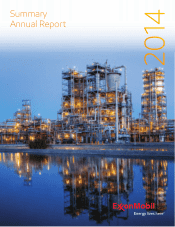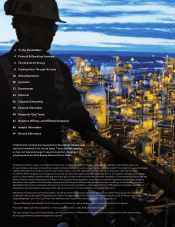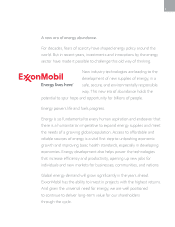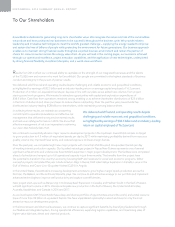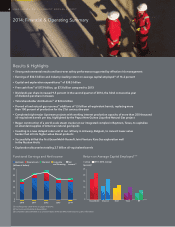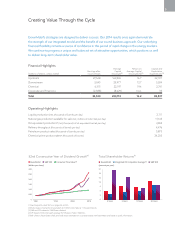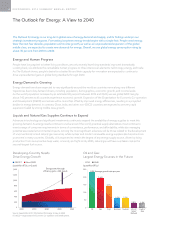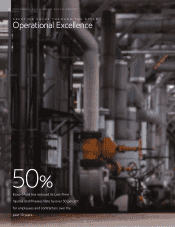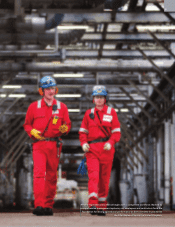Exxon 2014 Annual Report Download - page 9
Download and view the complete annual report
Please find page 9 of the 2014 Exxon annual report below. You can navigate through the pages in the report by either clicking on the pages listed below, or by using the keyword search tool below to find specific information within the annual report.
Resources: Then and Now
Current recoverable resources are sufficient to meet the world’s need for oil and gas beyond the 21st century. Today, as in
the past, improvements in exploration and production technologies continue to open doors to new oil and gas resources.
In terms of assessing mankind’s ability to meet future oil and gas demand, what matters is not how much hydrocarbon is
in the ground (a fixed, although unknown number), but how much of that resource is technically recoverable (a number
that changes over time). The U.S. Geological Survey (USGS) estimates that total remaining global recoverable crude
and condensate resources have grown from about 1 trillion barrels in the 1980s to about 4.5 trillion barrels today.
The International Energy Agency estimates the world’s remaining recoverable natural gas resources have more than
doubled to about 28,500 trillion cubic feet from 2000 to year-end 2013.
Advances in technology have enabled this growth. One example is the discovery of deepwater resources and the
development of technology to produce them. Another is Canadian oil sands. Early on, recovery factors for in situ
(non-surface mined) oil sands were estimated to be around 10 percent, but these estimates have more than quadrupled
through the application of advanced technologies. More recently, unconventional production technologies, such as
hydraulic fracturing and horizontal drilling, have unlocked significant resources of oil and natural gas that will help supply
global markets for many decades.
These human innovations continue to extend “years of coverage” – the amount of time resources would last given
current demand. In 1981, the USGS estimated there was less than 60 years’ worth of recoverable crude and condensate.
By year-end 2013, years of coverage had more than doubled to over 150 years. Gas resources are currently expected to
have more than 200 years of coverage given current demand.
PHOTO: By 2040, per capita GDP in China is expected to be four times higher than it was in 2010, driving an increase in the
country’s energy demand, and reliance on new oil and gas resources.
7

